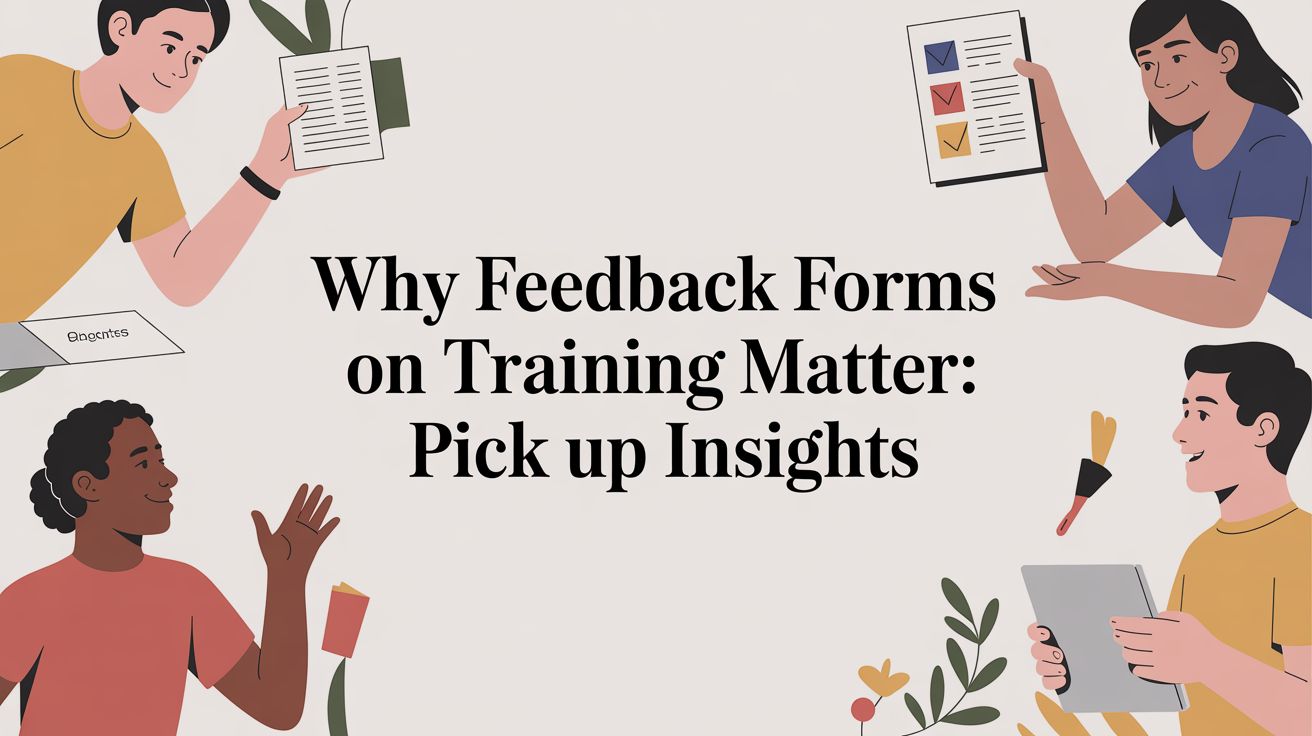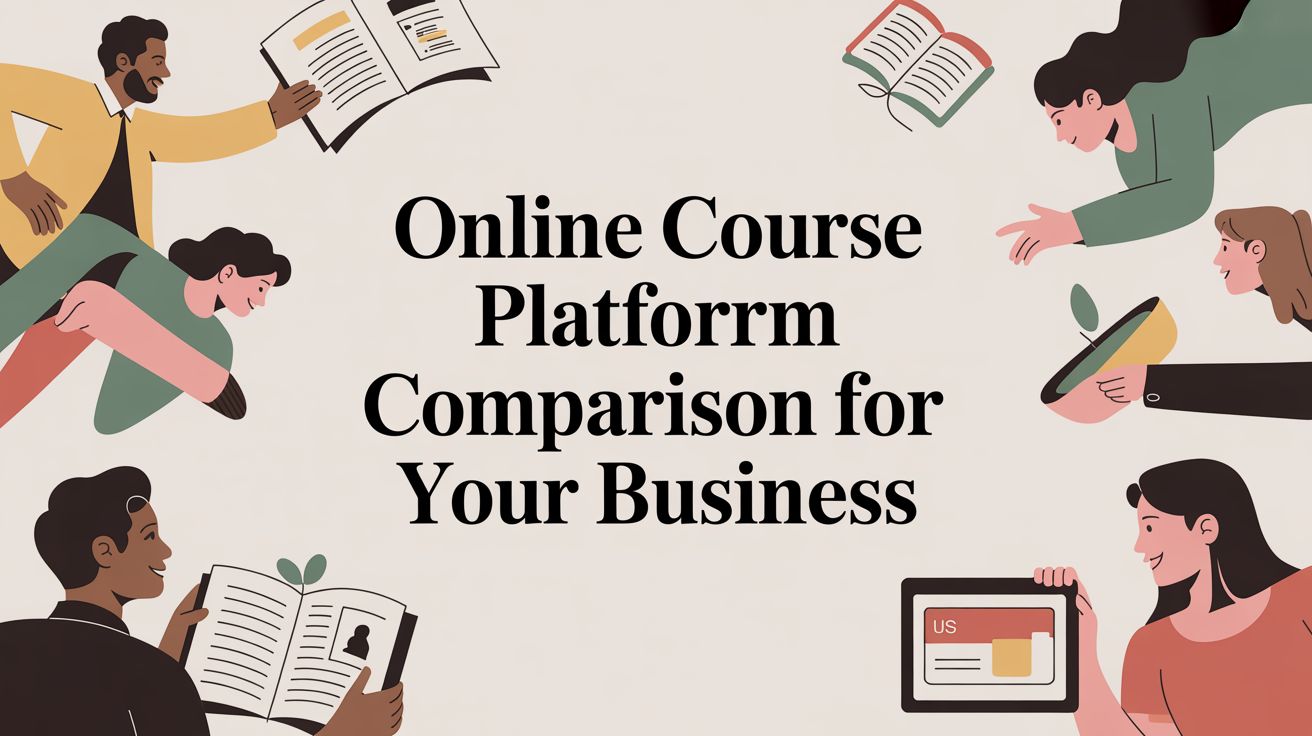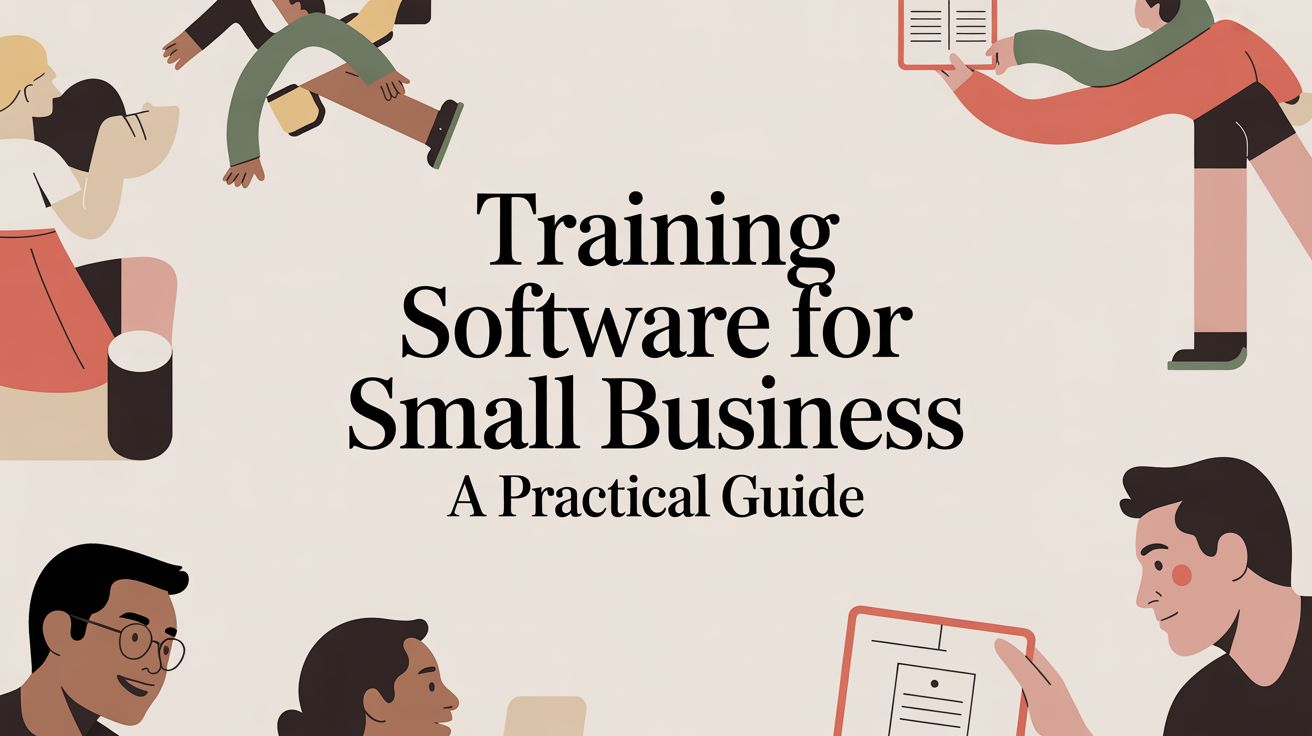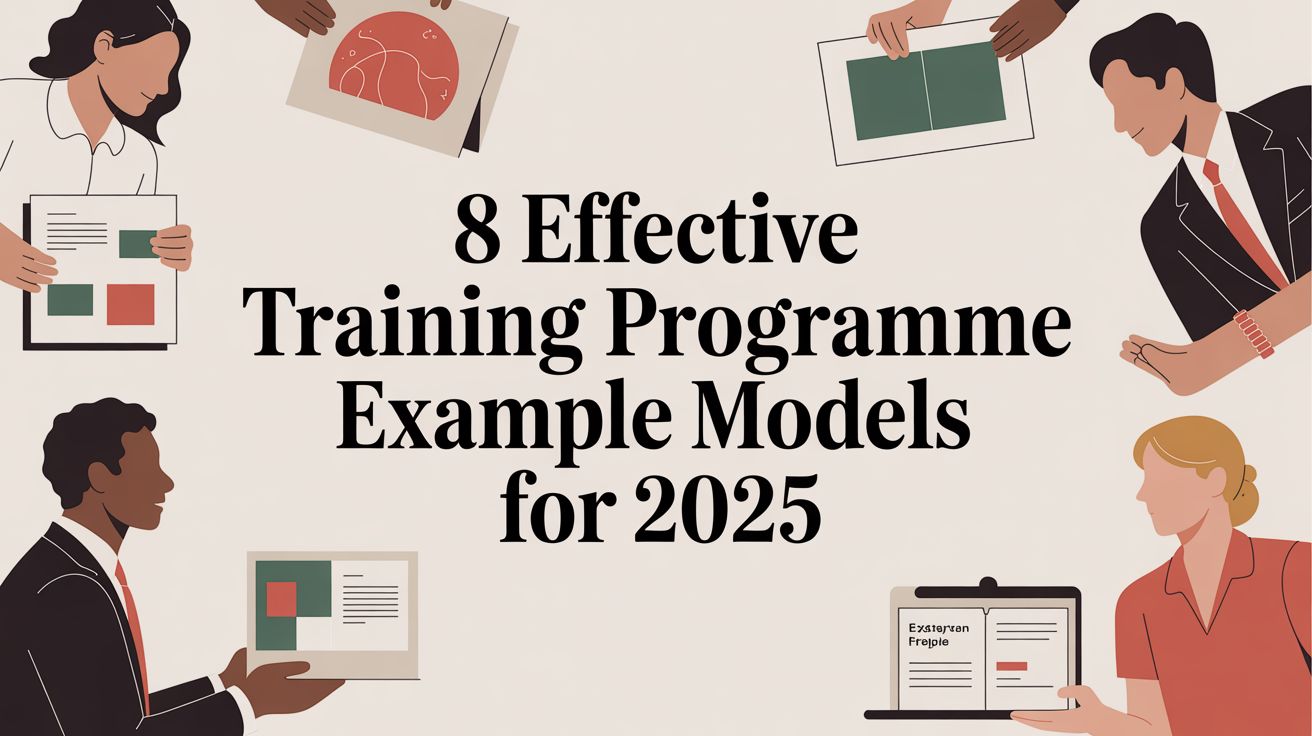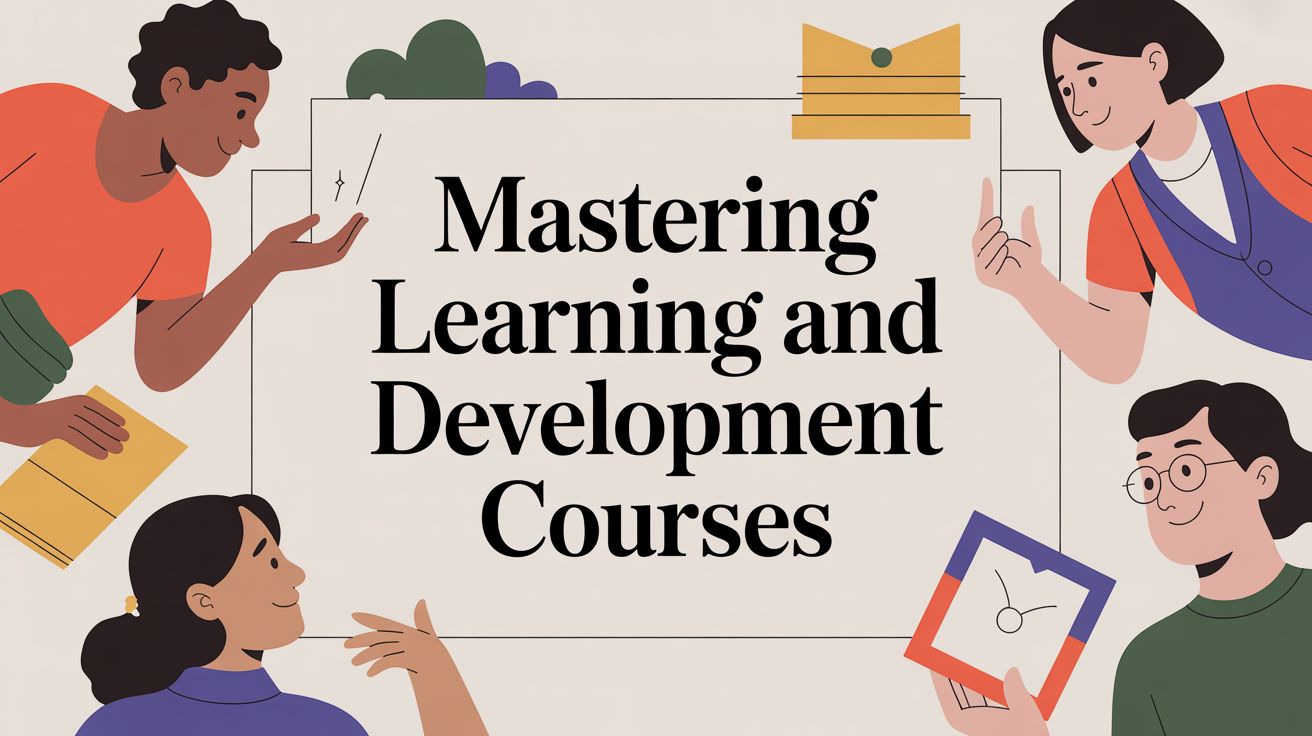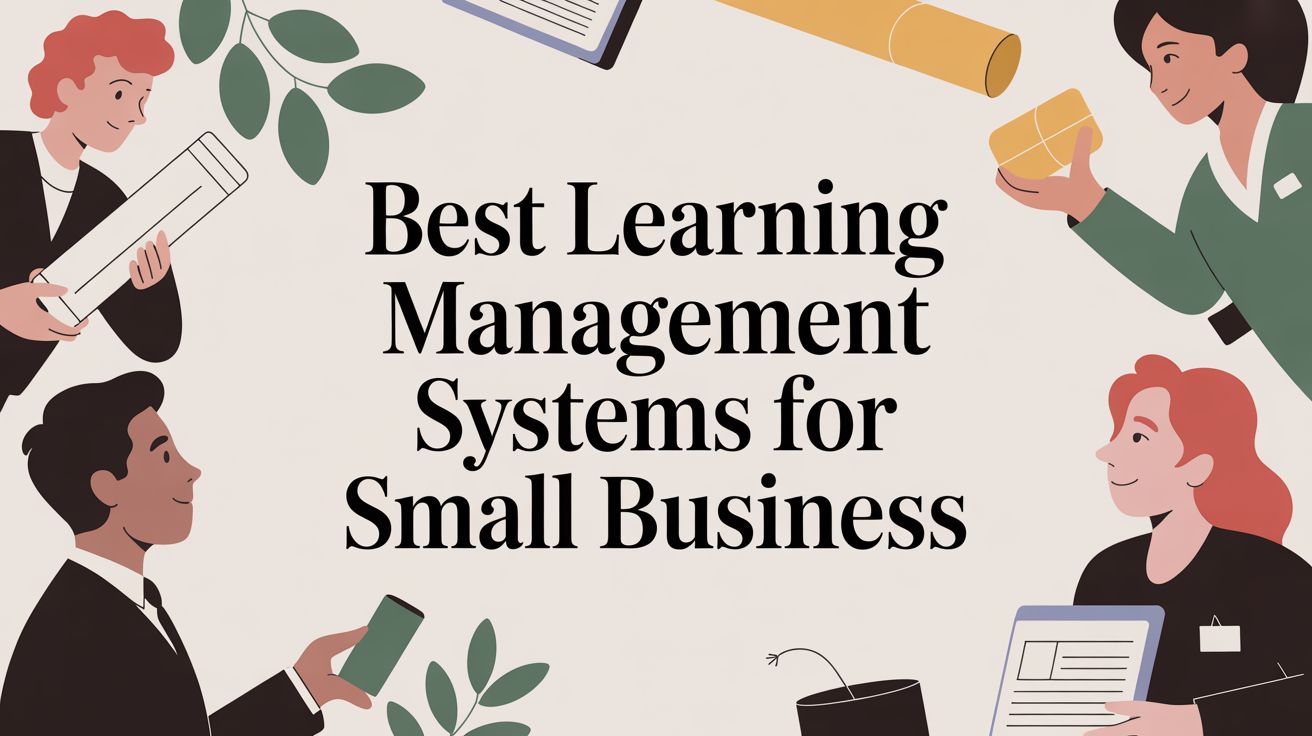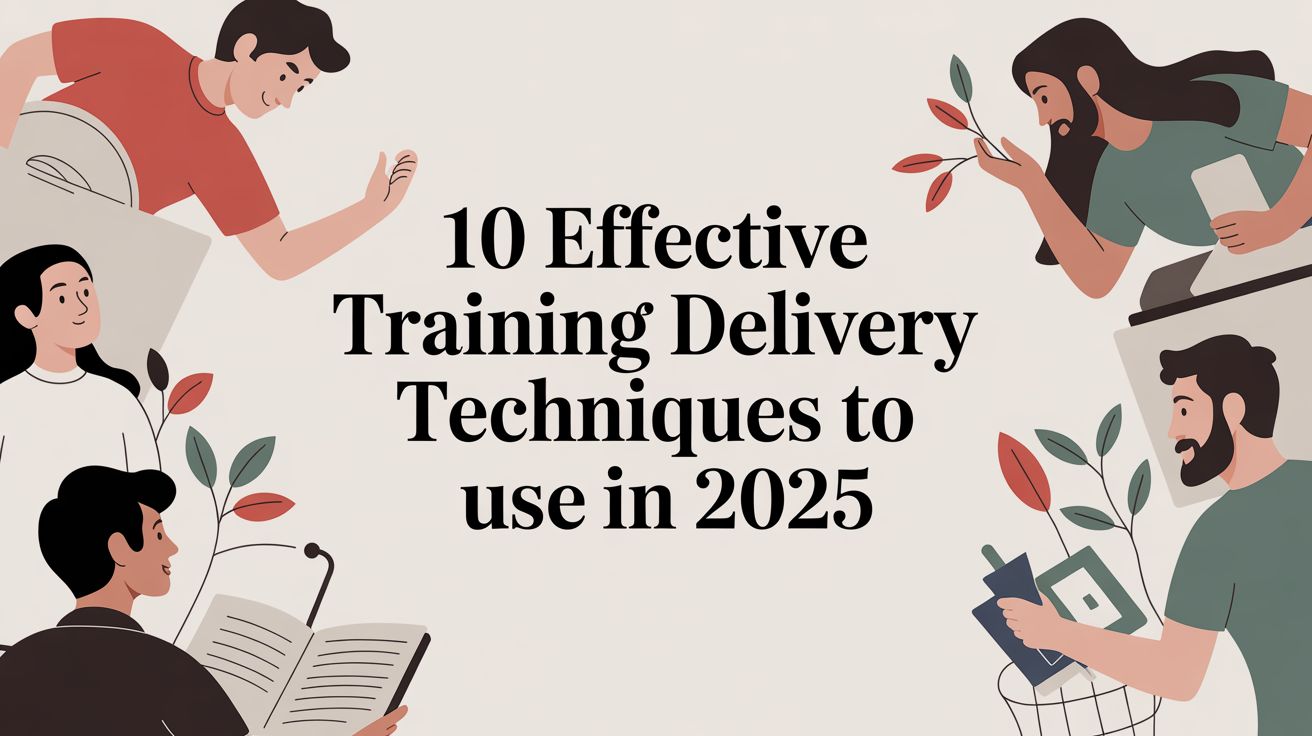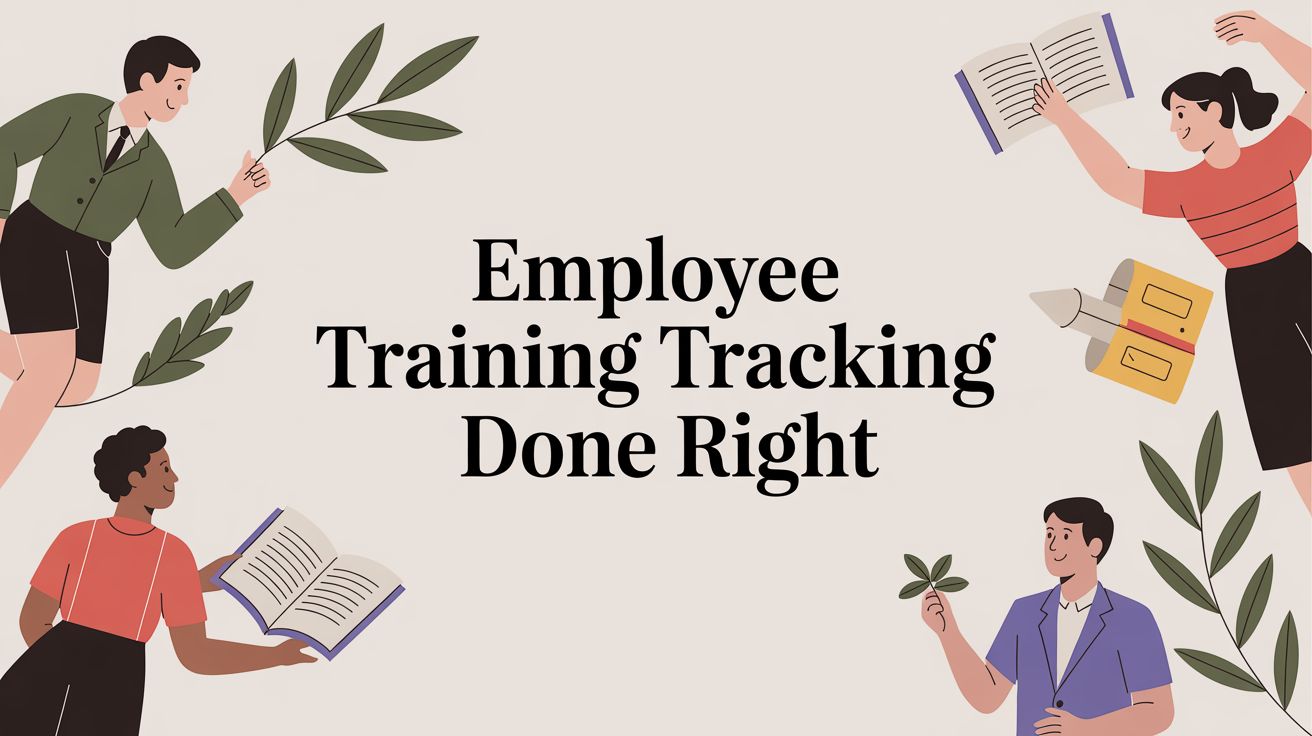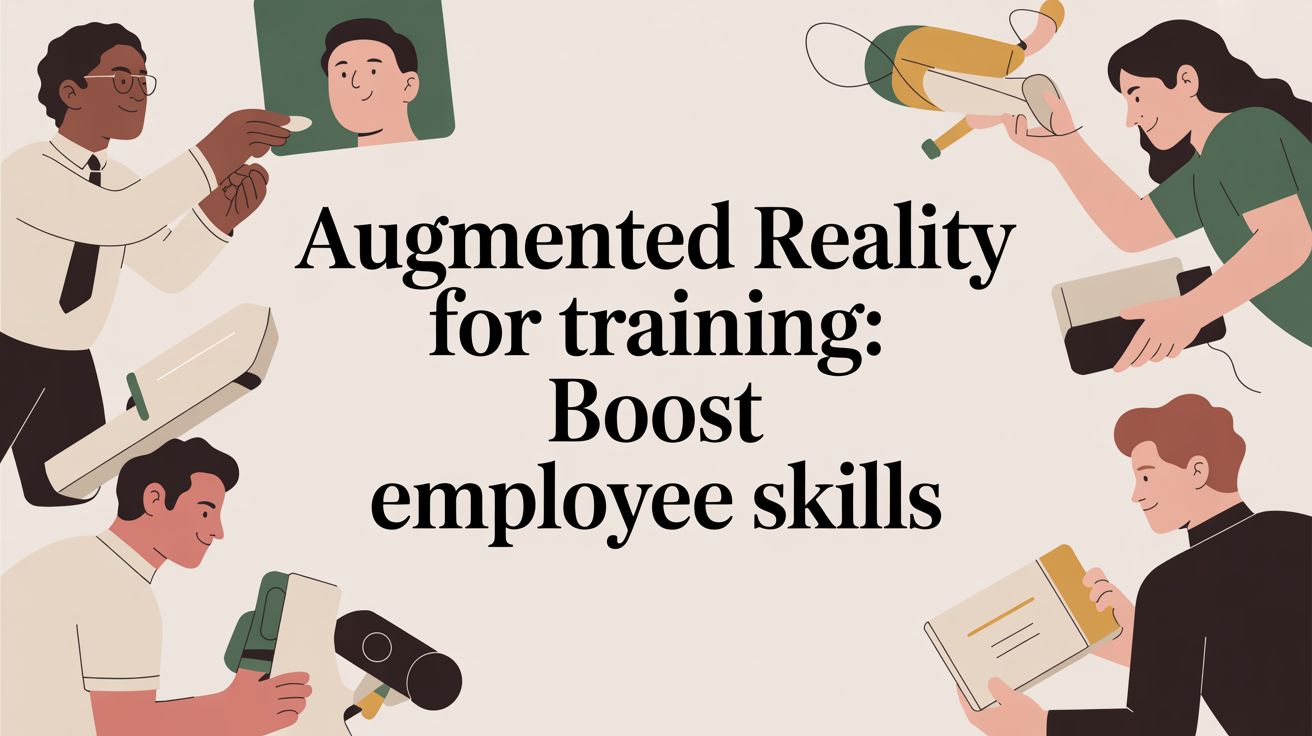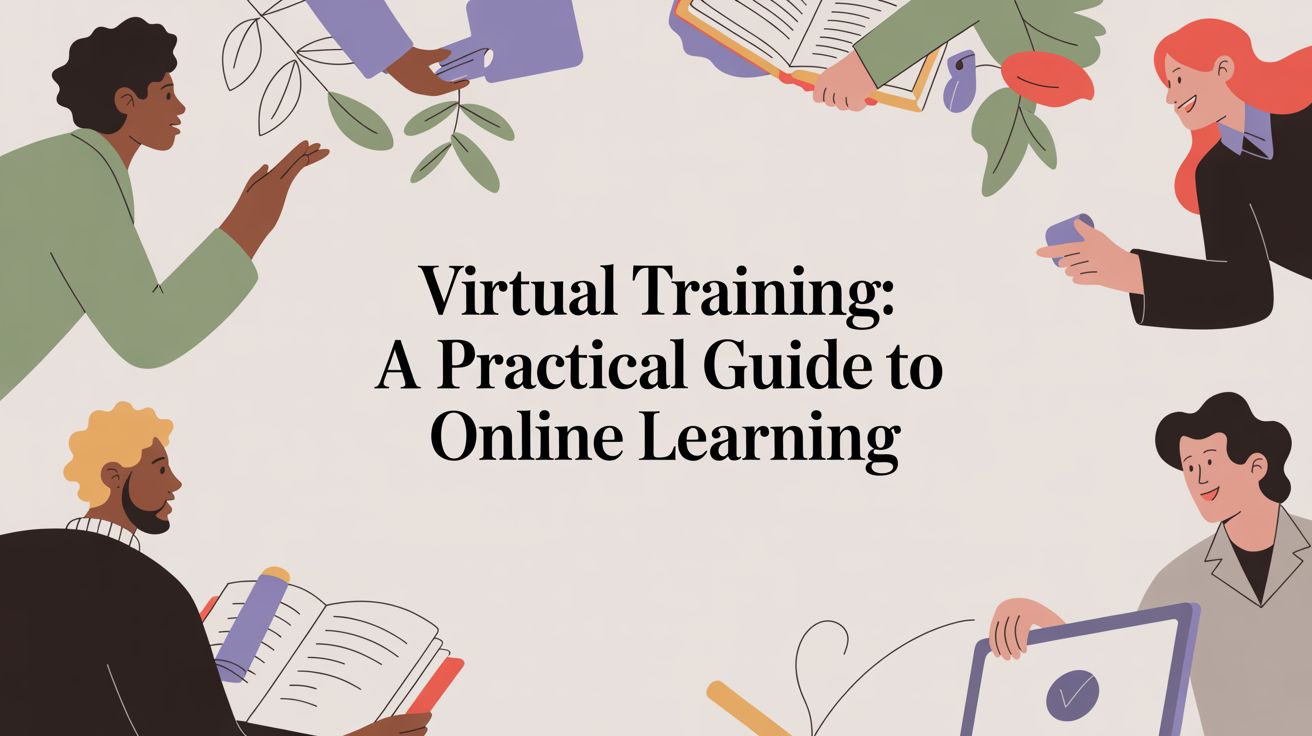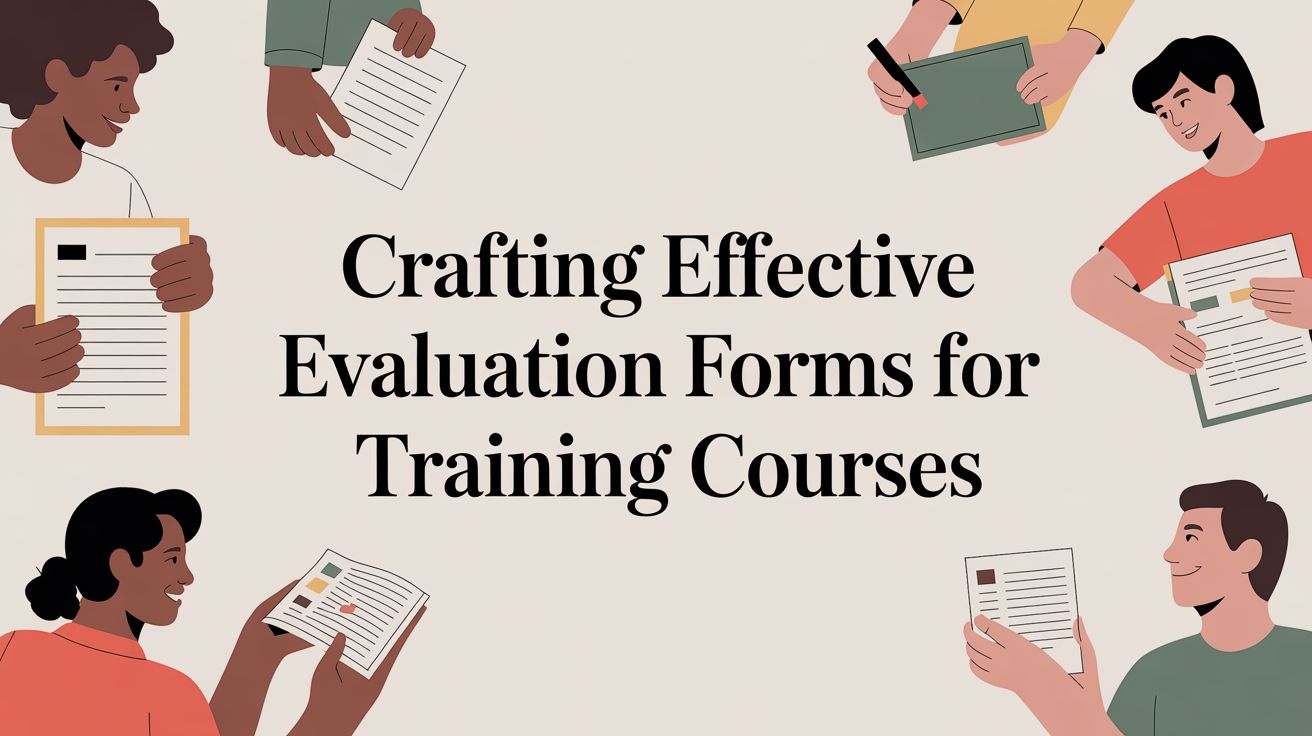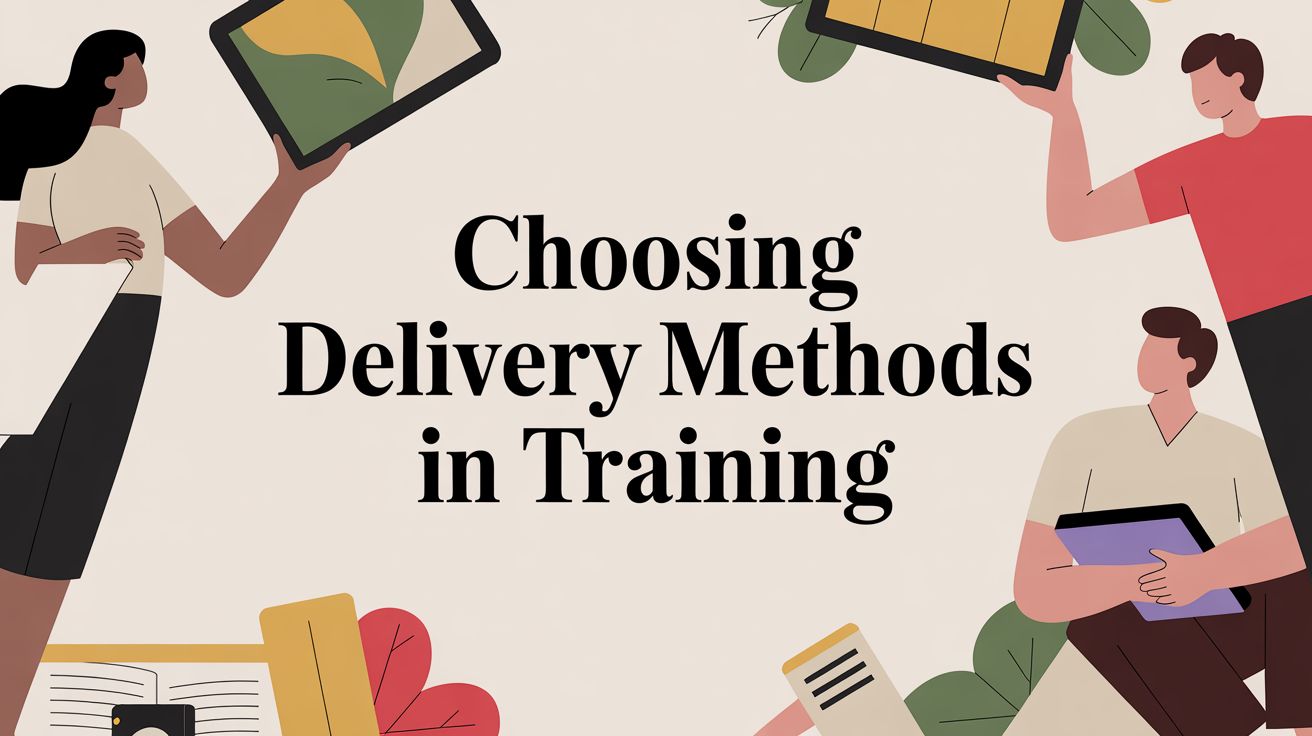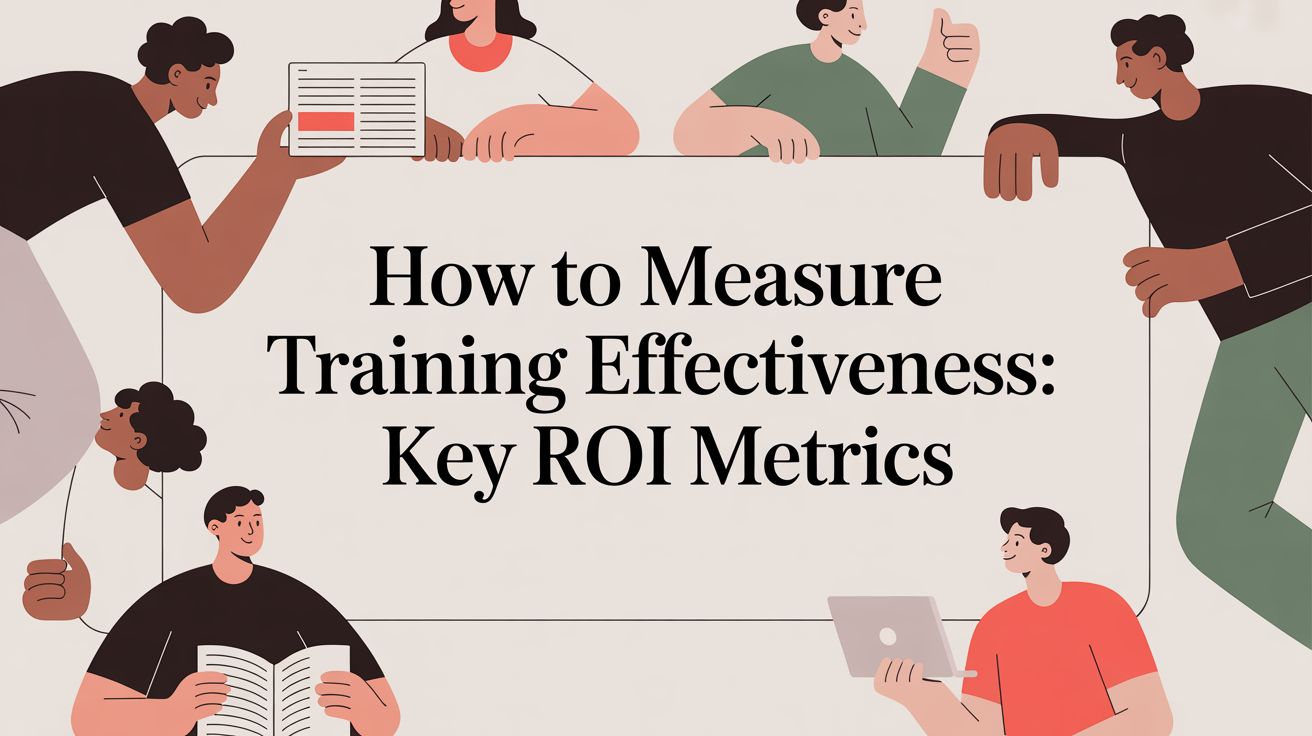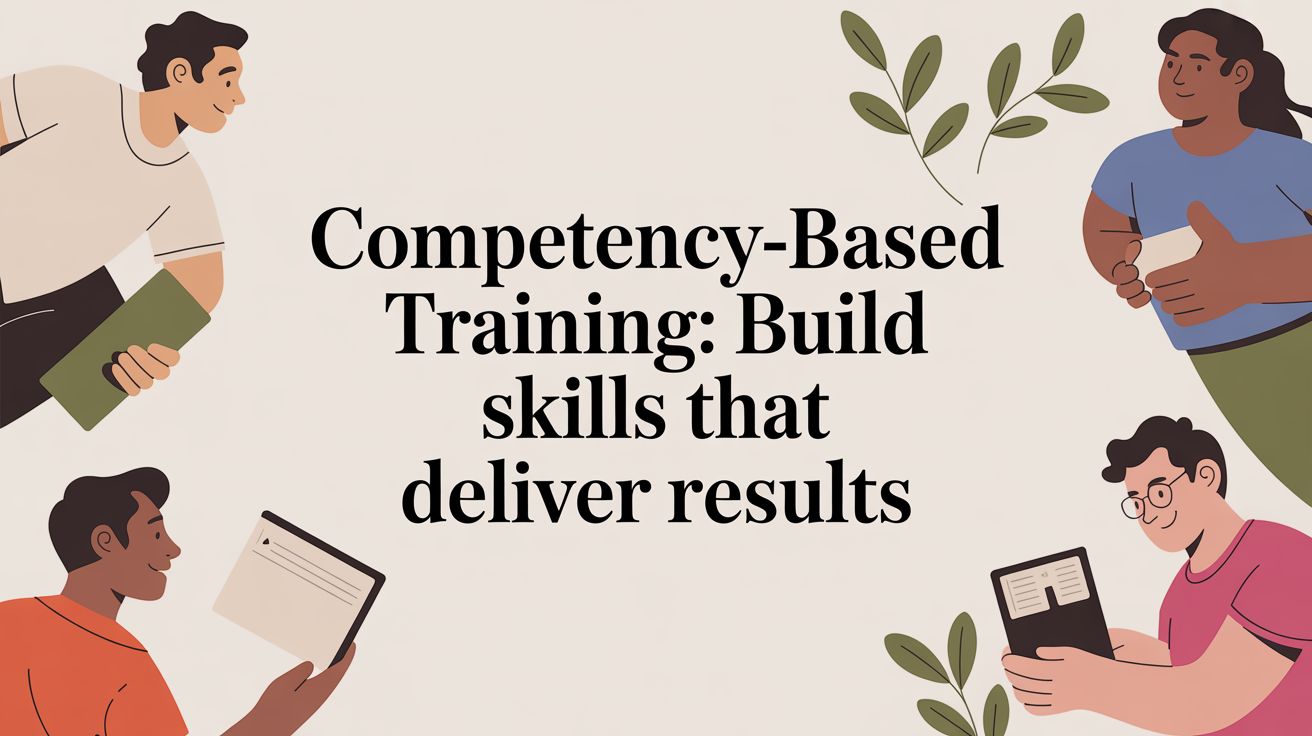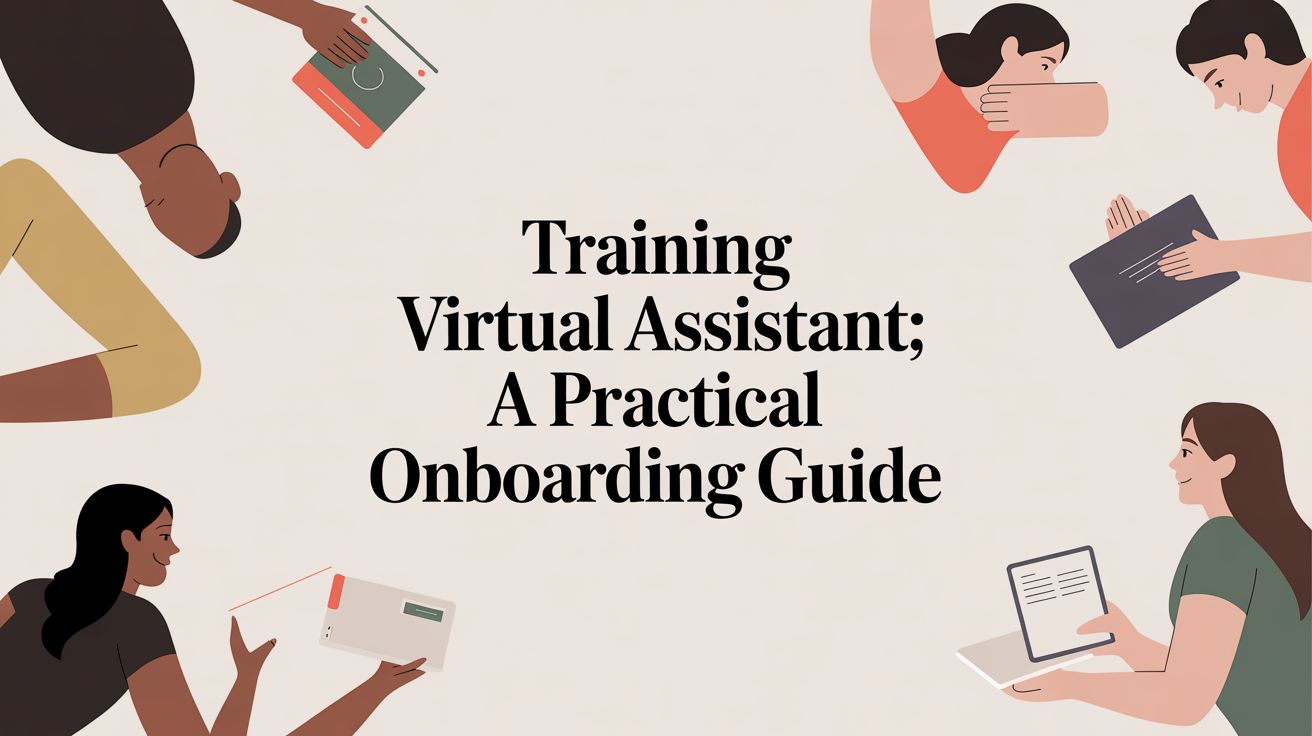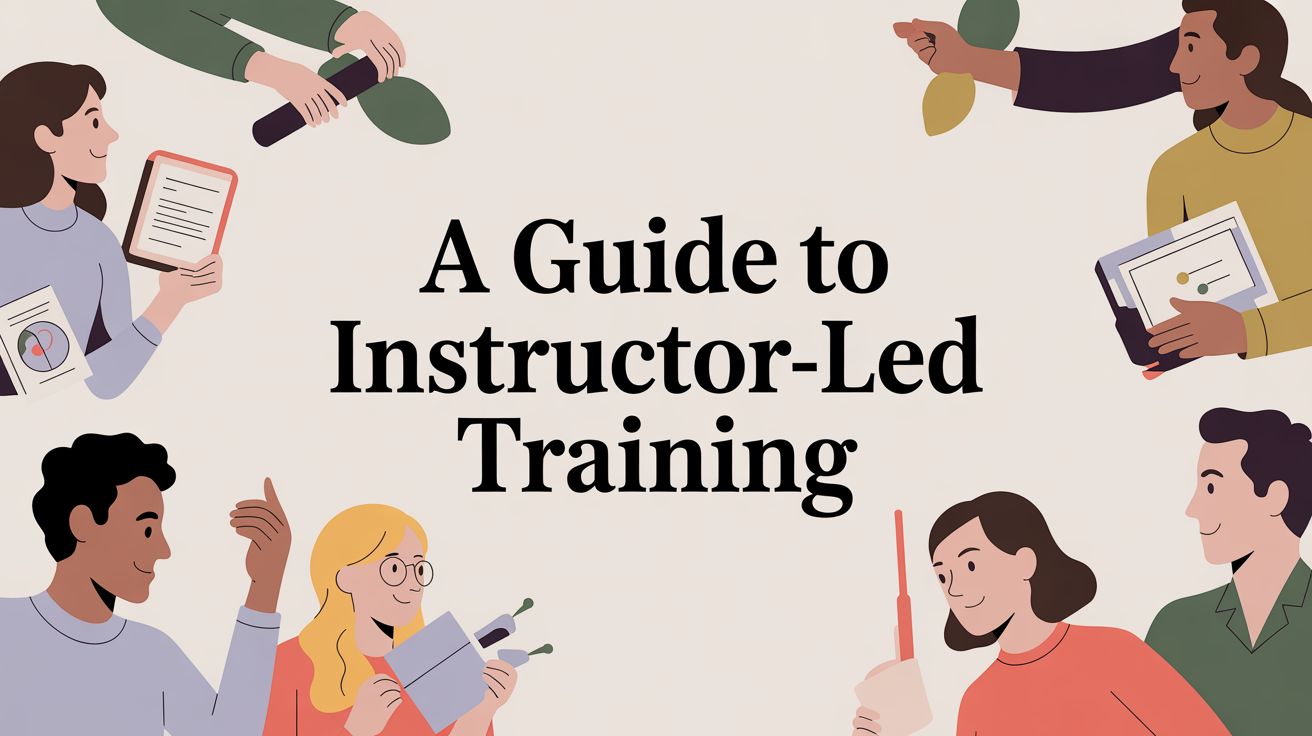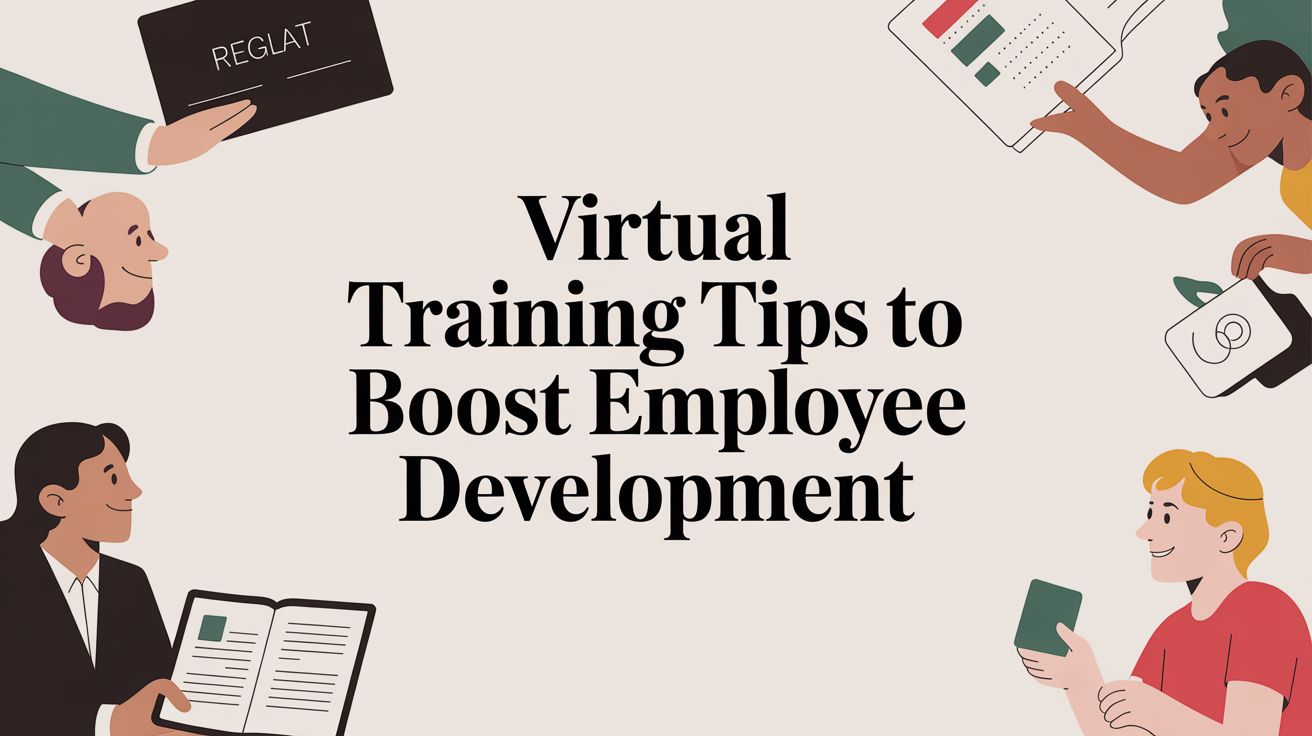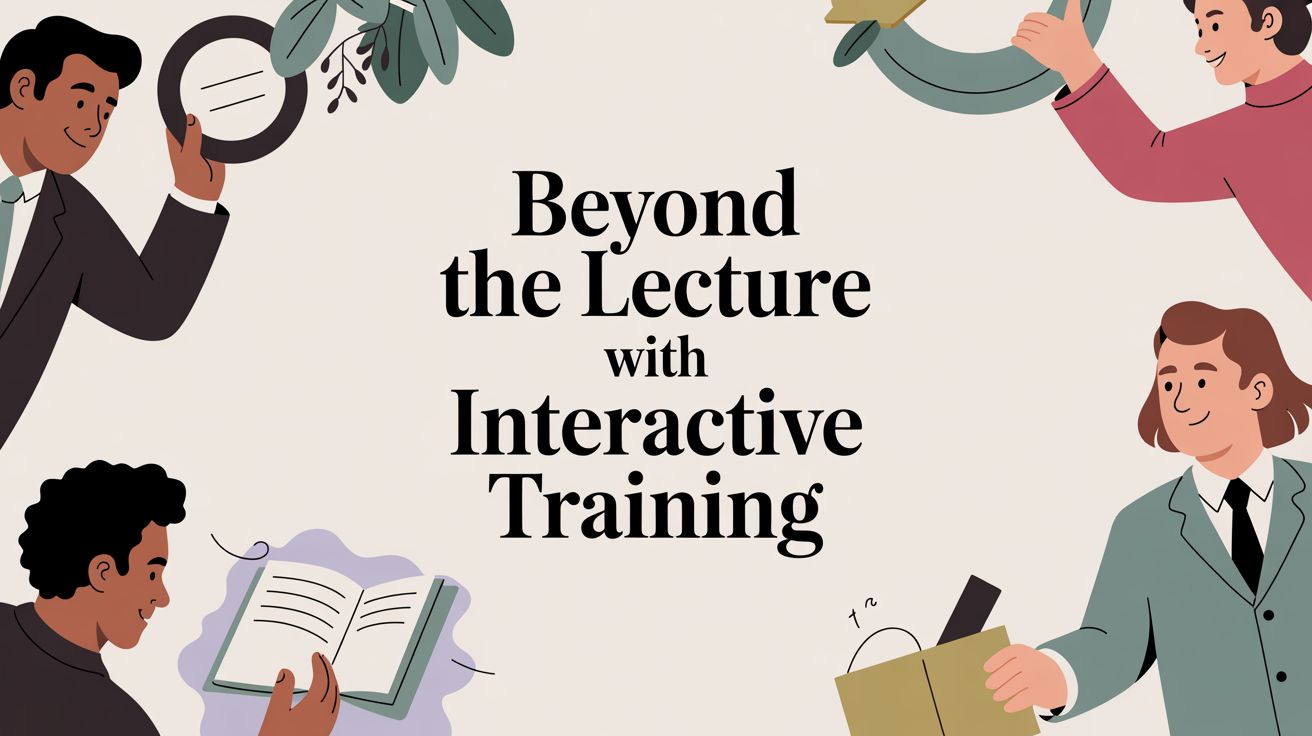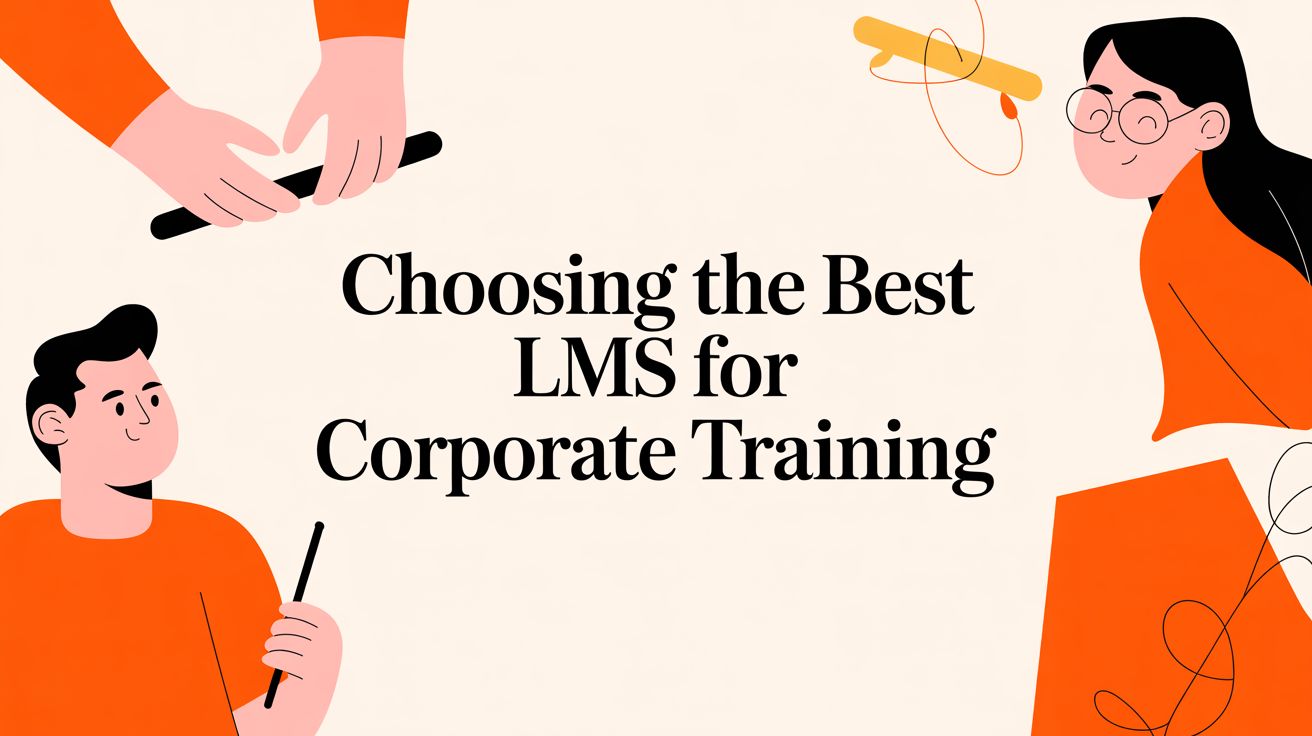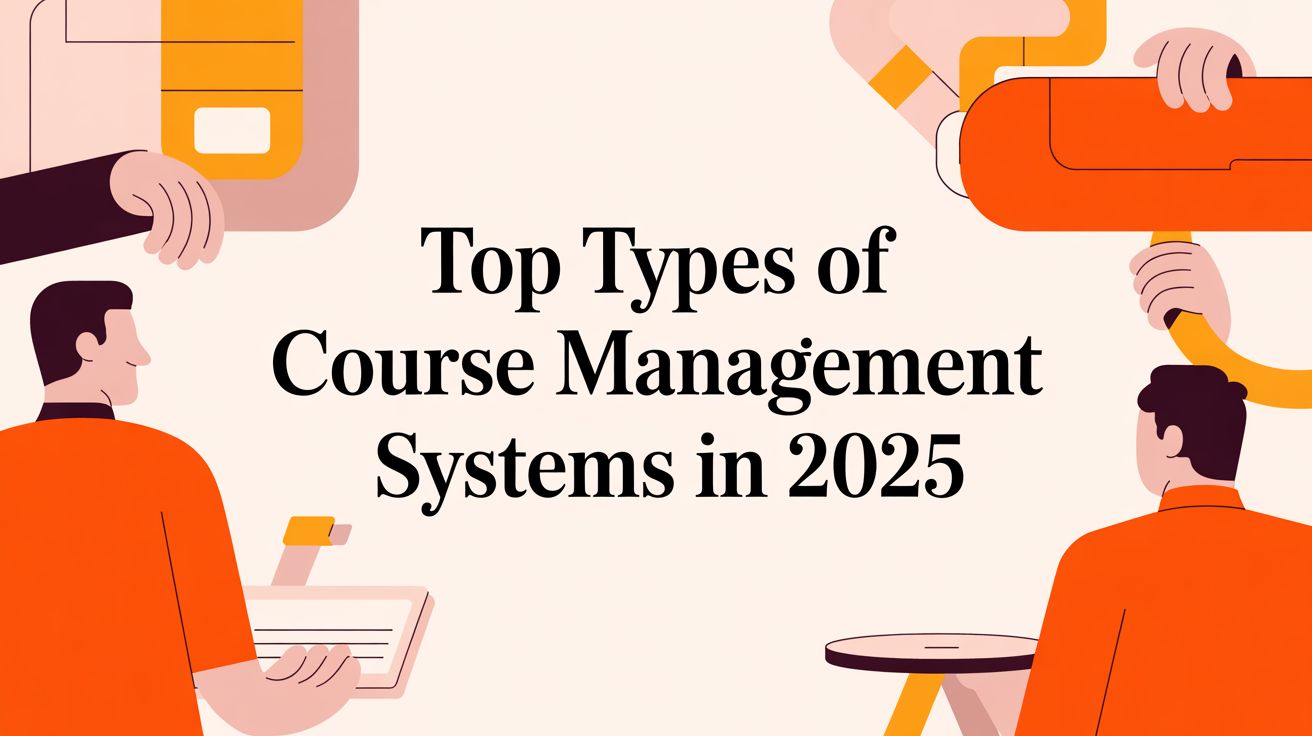What is Competency Based Training?
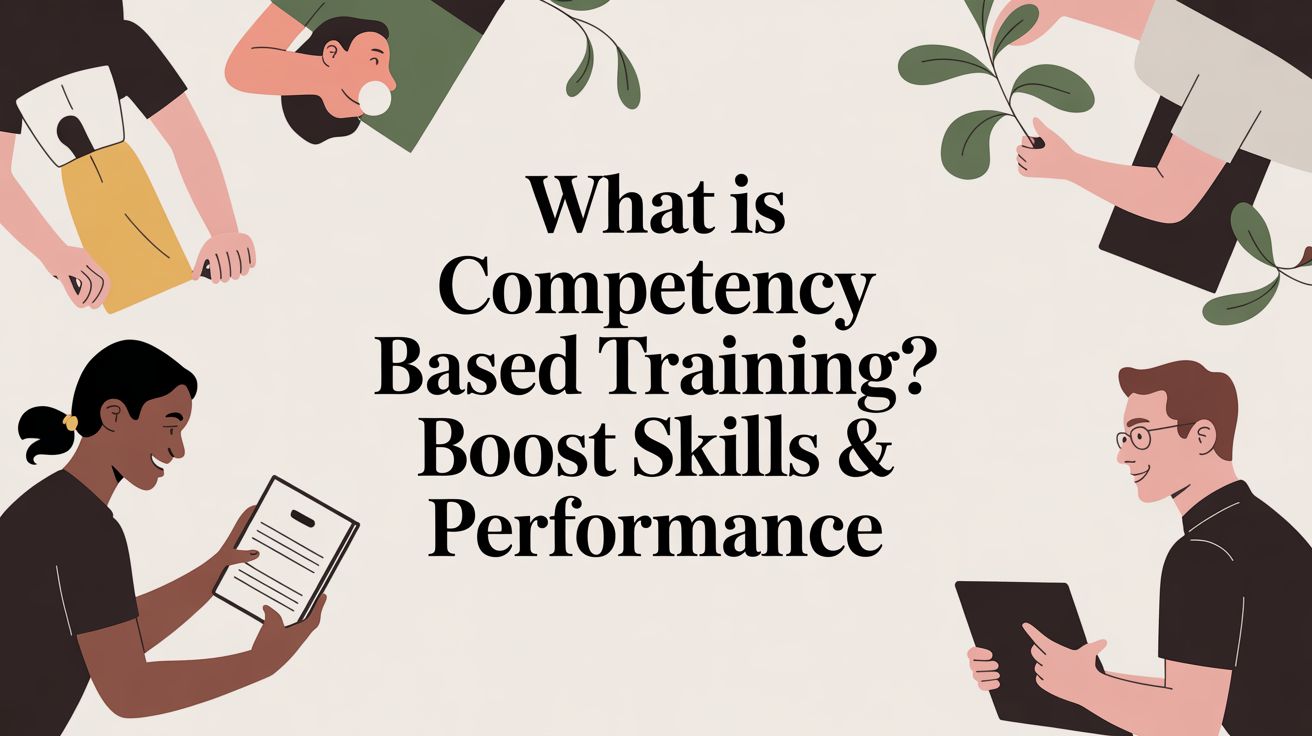
Competency based training (CBT) is an approach that cares more about what a person can do than how many hours they've sat in a training session. It flips the traditional model on its head, moving the goalposts from just "completing the course" to truly mastering a skill.
The real test? Being able to apply that knowledge effectively when it actually matters.
What is Competency Based Training, Really?
Think about learning to ride a bike. A traditional class might have you watch videos and read manuals for a few weeks before giving you a certificate. But does that mean you can actually ride?
Competency based training doesn't care about the schedule. It asks one simple question: Can you get on the bike and ride it without falling over?
That practical, "prove it" philosophy is the heart of CBT. It’s a learning strategy built around the individual, where progress is tied directly to demonstrating specific, well-defined skills. Instead of being locked into a fixed pace with a group, each person moves ahead only when they’ve mastered the current competency.
The Big Shift: From Time Served to Talent Shown
So, why is this model getting so much attention now? Because it solves a real-world business problem: the urgent need for a skilled and adaptable workforce.
We're all seeing how fast the professional world is changing. A report from the World Economic Forum projects massive shifts in the job market due to technology and automation. To keep up, companies must upskill their teams efficiently. This makes training that genuinely closes skill gaps more critical than ever.
CBT tackles this challenge head-on by focusing on outcomes, not just the process. It's not about checking off a training requirement; it's about building a team where every single person has the verified skills to excel. A powerful part of this is the concept of stackable credentials, where people build up qualifications piece by piece as they prove mastery.
To see just how different this is, let's compare the two approaches side-by-side.
Traditional Training vs Competency Based Training
This table breaks down the core differences between the old way of doing things and the competency-based model.
| Attribute | Traditional Training | Competency Based Training |
|---|---|---|
| Core Principle | Time-based progression | Mastery-based progression |
| Focus | Course completion and attendance | Demonstrating specific skills |
| Pacing | Fixed, cohort-based schedule | Flexible, self-paced learning |
| Assessment | Final exams, quizzes, grades | Real-world tasks, simulations |
As you can see, the shift is fundamental. It's about moving away from a one-size-fits-all system to one that truly respects individual learning journeys and focuses entirely on what people can accomplish.
The bottom line is this: Competency based training forges a direct, unbreakable link between learning and actual job performance. It's how you ensure training dollars translate into a more skilled, confident, and productive team that’s ready for whatever comes next.
The Core Principles That Make Competency-Based Training Work
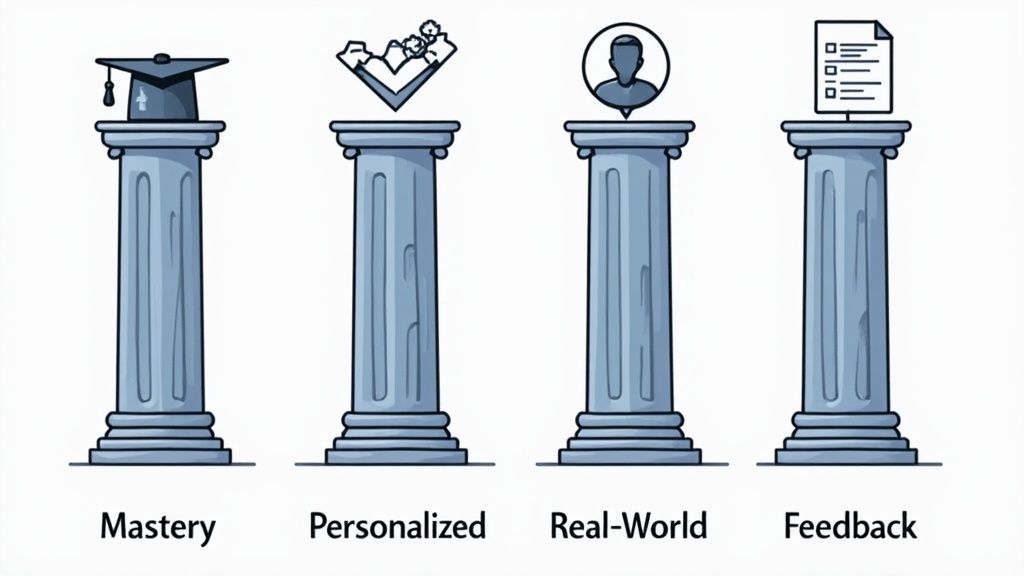
To really get what competency-based training is all about, we have to look under the hood at the principles that make it so effective. These aren’t just buzzwords; they’re the practical rules of the road for designing, delivering, and measuring training that actually sticks.
When you put them all together, they create a system that cares more about what people can do than which boxes they’ve checked. Let’s dig into the concepts that give this approach its power.
Mastery Before Progression
The single most important idea in CBT is this: Mastery Before Progression. Think about building a house. You wouldn't dream of putting up the walls until you knew for certain the foundation was solid. Rushing that step would put the whole project at risk.
Traditional training often shuffles everyone along at the same pace, whether they've truly grasped the material or not. CBT flips that script. It demands that each person proves they've mastered a skill before they're allowed to tackle the next one. This simple rule is a game-changer because it closes knowledge gaps before they can even form.
A new sales rep, for example, would have to nail a role-play handling common customer objections before even thinking about moving on to advanced negotiation tactics.
Tip: In a competency-based world, time is the variable, but the standard of performance is fixed. Mastery is the only thing that matters.
Personalized Learning Journeys
Because people learn at different speeds, CBT naturally leads to Personalized Learning Journeys. Let's be honest, not everyone walks in the door with the same background. Some folks have years of experience, while others are starting from square one. CBT doesn't just acknowledge this—it embraces it.
Instead of making a seasoned pro sit through a basic "101" course they could teach themselves, this model lets them test out. They can prove what they already know and jump straight to the areas where they actually have skill gaps. It's a sign of respect for an employee's time and it keeps them locked in by focusing only on what's relevant to them.
This tailored approach makes training wildly more efficient. A software developer might skip modules on familiar tools and focus entirely on mastering a new programming language for an upcoming project. That’s how you make training feel impactful, not like a chore.
Real-World Assessments
Another pillar of competency-based training is its focus on Real-World Assessments. This is where we move past the typical multiple-choice quiz and into practical, hands-on demonstrations of skill. The entire point is to answer a single, crucial question: can this person actually use what they've learned on the job?
The assessment should feel as close to the real work environment as possible. You wouldn’t just give a customer service trainee a quiz about empathy. Instead, you'd evaluate how they handle a simulated call with an upset, emotional customer.
Assessments like this deliver huge benefits:
- Authenticity: They measure real capability, not just someone’s ability to memorize facts.
- Confidence: People build genuine confidence by succeeding in realistic scenarios.
- Feedback: Trainers can give incredibly specific, actionable advice based on what they see.
Crafting these real-world challenges is key to a great CBT program. To learn more about this, check out our guide on designing truly interactive training.
Clear and Measurable Competencies
Finally, none of this works without Clear and Measurable Competencies. The whole system is built on having incredibly precise definitions of what "good" looks like for every skill. These definitions are then broken down into observable actions and clear performance standards.
Before any training even starts, everyone—the employee, their manager, and the trainer—knows the exact target. Vague goals like "get better at communication" are tossed out. They're replaced with concrete competencies, like, "The employee can deliver a project update in a team meeting that is clear, concise, and free of jargon."
This level of clarity cuts through the fog, giving learners a clear target to aim for and assessors a clear standard to measure against.
What Are the Real-World Benefits for Your Business?

Adopting a new training philosophy has to be about more than just theory—it’s about getting real, measurable results. Competency-based training isn't an abstract goal; it delivers tangible advantages that solve the real-world challenges modern companies are up against. This is a strategic shift that turns learning directly into performance, impacting everything from day-to-day operations to your bottom line.
When training is laser-focused on proven skills, it stops feeling like a cost center and becomes a powerful engine for growth. The benefits aren't just theoretical. They’re practical, visible, and tied directly to your organization’s health and competitiveness.
Let's break down how this model actually delivers on its promise.
Close Critical Skills Gaps with Surgical Precision
One of the most immediate wins with competency-based training is its ability to find and fill skills gaps with incredible accuracy. Think about traditional training—it often takes a one-size-fits-all approach, forcing employees to sit through topics they’ve already mastered. CBT flips that model on its head. It pinpoints the exact abilities an individual or team is missing and delivers targeted training to fill that specific void.
This precision makes a huge difference. A World Economic Forum survey found that employers expect core skills to change by at least 44% in the next five years. Companies using CBT can adapt to this reality much faster. When you only train people on what they truly need, you get a much quicker and more direct return on that investment. You can see more data on this in the full WEF report.
Boost Employee Engagement and Keep Your Best People
People want more than just a paycheck these days. They want to see a clear path forward in their careers. Competency-based training gives them exactly that. By clearly defining the skills needed to advance, it hands your team members a transparent roadmap for their professional growth. That kind of clarity is a massive motivator.
When people can draw a straight line between the effort they put in and their career progression, their engagement skyrockets. They stop being passive recipients of mandated training and become active participants in their own development. The result?
- More Motivation: Employees are far more driven when they understand why they're learning a skill and how it will help them (and the company) succeed.
- Higher Job Satisfaction: A sense of mastery and progress is a core driver of happiness at work. Happy employees are far less likely to leave, which slashes your turnover costs.
- A Stronger Internal Talent Pipeline: You start building a culture of continuous improvement, making it much easier to promote from within and hold onto your top performers.
Tip: One of the most powerful things you can do is clearly map competencies to job roles and promotion criteria. This simple act shows employees you’re genuinely invested in their future, building loyalty and turning training from a chore into a real opportunity.
Maximize Your Training Return on Investment
Every leader has to justify their training budget. Competency-based training makes proving that ROI incredibly straightforward because every dollar is tied to a measurable improvement in skill. You’re no longer paying for "seat time"—you’re investing in provable capabilities that strengthen your business.
This efficiency is especially important for instructor-led sessions. By focusing on specific competencies, you ensure that time spent in face-to-face or virtual training is as productive as possible. A powerful training management system is designed to support this model, helping you organize and track these highly focused sessions without getting buried in administrative work.
Ultimately, by ensuring training creates a more skilled, engaged, and productive workforce, CBT delivers a clear and compelling return that resonates with leadership and stakeholders alike.
Putting Your Competency-Based Training Program Into Action
Shifting to a competency-based model isn't something you do overnight. Think of it as a carefully planned journey, one that requires a clear roadmap connecting your training efforts directly to the heart of your business.
By breaking the process down into a few practical steps, you can build a program that's not only effective but also built to last. Let's walk through exactly how to get it done.
Phase 1: Start with Your Business Goals
Before a single training module is built, you need to anchor your entire program to your company's strategic goals. Ask yourself one simple question: What results are we actually trying to drive?
It could be anything from boosting sales numbers and slashing production errors to delighting customers. Whatever the objective, your training goals must be a direct line to these bigger-picture aims. This critical first step ensures your program is a real performance-driver, not just a "nice-to-have."
Phase 2: Define and Map the Core Competencies
With your business goals locked in, it's time to figure out what skills people need to get there. This is the bedrock of your entire program. Simply saying you want a "good communicator" won't cut it—you need to define what that looks like in action.
For instance, a "Project Management" competency isn't just a title. It's a collection of observable skills, like:
- Building a project plan that clearly outlines the scope, timeline, and required resources.
- Leading a kick-off meeting that gets every single stakeholder on the same page.
- Spotting potential project risks and neutralizing them before they cause problems.
The best way to get this right? Talk to the people who live and breathe these roles every day. Host workshops with department heads and your top performers to map out precisely what excellence looks like on the ground.
Phase 3: Create Meaningful Ways to Assess Skills
Once you know what good looks like, you have to figure out how you're going to measure it. In competency-based training, assessment isn't about passing a multiple-choice quiz. It's about proving you can do the job.
Your methods need to feel real and directly reflect the tasks employees handle day-to-day. Some powerful examples include:
- Work Samples: Asking an employee to submit a report they wrote, a piece of code they developed, or a marketing plan they created.
- Direct Observation: Actually watching a sales rep handle a client call or a manager conduct a team check-in.
- Simulations and Role-Playing: Setting up realistic scenarios, like a tricky negotiation or a challenging customer service interaction, and seeing how they perform.
The whole point is to collect solid evidence that the learner has truly mastered the skill.
Phase 4: Build and Curate Your Learning Content
Now you can finally start assembling the learning materials. But this doesn't mean you have to create every single thing from scratch. The smartest approach is a blend of curating great existing resources—like articles, videos, or industry guides—and creating custom content for the skills that are totally unique to your company.
To make sure your content hits the mark, it’s helpful to lean on proven strategies for developing a training curriculum. The golden rule is to match the content directly to the competency. If you're teaching public speaking, learners need to do more than just read about it; they need opportunities to get up and speak.
Phase 5: Launch, Manage, and Continuously Improve
With your framework in place, you're ready to go live. But a smooth launch requires more than just great content, especially for live or hybrid training. This is where a good system makes all the difference. Understanding the different types of course management systems is key to picking one that fits your needs.
Tip: Don't try to boil the ocean by launching a company-wide program all at once. Start small with a pilot program for a single team or department. This gives you a chance to test your ideas, fine-tune your assessments, and gather feedback before you roll it out to everyone.
A dedicated platform like Coursebricks, for example, lets you handle scheduling, track attendance, and keep all your assessment data in one place, saving you from spreadsheet headaches.
Finally, remember that your program is a living thing. You have to keep gathering feedback, tracking performance, and using that data to make improvements. This ongoing cycle is what will keep your training relevant and impactful for years to come.
How a Training Management System Powers Your Program
A great competency-based training strategy is one thing, but bringing it to life—especially for instructor-led and hybrid sessions—is another challenge entirely. While the principles are straightforward, the logistics of managing personalized, hands-on training can quickly spiral into chaos without the right system in place.
This is where a Training Management System (TMS) steps in to become the operational backbone of your program. Think of it this way: if a Learning Management System (LMS) is built for self-paced, asynchronous e-learning, a TMS is custom-built to handle the intricate dance of live, instructor-led training. It’s all about mastering the administrative side so your program can actually work.
If you want to go deeper on the differences, you can explore some of the best LMS for corporate training and see how their focus is quite different from a TMS.
Taming Complex Logistics
At its core, competency-based training hinges on people demonstrating real skills, which often means juggling trainers, booking facilities, and organizing specific equipment. A TMS like Coursebricks pulls all these moving parts into one central hub. It helps you manage the entire lifecycle of your training events, making sure everything runs like clockwork so trainers can focus on what they do best: coaching people.
Here are just a few of the logistical headaches a TMS solves:
- Scheduling and Resource Allocation: You can effortlessly book trainers, reserve rooms, and manage equipment without the back-and-forth emails and double-booking nightmares. Everyone gets what they need for effective hands-on practice.
- Automated Communication: The system can automatically send out confirmations, reminders, and follow-up materials. This cuts down on no-shows and keeps learners in the loop.
- Attendance Tracking: Accurately log who attended which session. This isn't just about ticking boxes; it's essential data for tracking progress against your competency goals.
The Coursebricks dashboard, for example, gives you a single screen to manage all of these administrative tasks without breaking a sweat.
This kind of visual command center gives you an immediate, at-a-glance overview of your course schedules, delegate bookings, and even financial performance.
Centralizing Performance and Assessment Data
Beyond logistics, a TMS is absolutely critical for tracking what truly matters in competency-based training: performance. When instructors are evaluating learners through observations, simulations, or practical tests, they need a single, reliable place to record that information.
Tip: Without a unified system, priceless assessment data gets scattered across spreadsheets, emails, and notebooks. A TMS gathers all those scattered observations and turns them into structured, actionable data. You get a crystal-clear picture of who has mastered which skills and who might need a bit more support.
With all your data in one place, you can track progress for individuals and entire teams. You can spot trends, identify common sticking points in your training, and make smart, data-driven decisions to improve your programs. A TMS is what turns a great training strategy into a manageable, scalable, and genuinely impactful reality.
Measuring the True Impact of Your Training
How can you be sure your training is actually working? Ticking a box that says "complete" or just tracking attendance doesn't really tell you anything. It certainly doesn't tell you if people are performing better in their roles.
With a competency-based model, measuring success is all about proving that the skills people learned are making a real, positive difference to the business. To get a clear picture, you need a solid framework. A fantastic tool for this is the Kirkpatrick Model. It breaks evaluation down into four logical levels, taking you from gut reactions all the way to bottom-line results.
Level 1: Learner Reaction
The first and most straightforward level is simply asking: how did people feel about the training? This is your gut check on satisfaction. Was the content relevant? Did the instructor keep them engaged?
Don’t dismiss this as a simple "happy sheet." If your team found the training frustrating or boring, chances are they didn't absorb much. You can get a quick read on this with:
- Post-training surveys: A few pointed questions can reveal a lot about the quality of the material and delivery.
- Informal chats: Pulling people aside right after a session for a quick chat can often yield the most honest feedback.
A positive reaction is a great start, but it's just the first step.
Level 2: Knowledge Acquisition
Alright, they liked it. But did they learn anything? Level 2 digs into whether your team actually absorbed the skills and information you were trying to teach.
This is where you connect your assessments directly back to the competencies you defined from the start. Solid ways to do this include:
- Pre- and post-training tests: This is a classic for a reason. Comparing scores gives you a clear measure of knowledge gained.
- Skill demonstrations: Get them to actually do the thing. Have participants perform a task in a controlled setting to see if the skill stuck.
- Case study analysis: Give them a real-world scenario and ask them how they'd handle it using what they just learned.
This stage confirms that the lightbulb actually went on. It’s the bridge to seeing that knowledge in action.
Level 3: Behavior Change
This is where the rubber really meets the road for competency-based training. Are people actually using their new skills back at their desks? Is the training changing how they approach their day-to-day work?
To find out, you have to get out of the training room and observe what’s happening in the real work environment.
- On-the-job observations: Have managers or coaches watch employees in action to see if they're applying new techniques.
- 360-degree feedback: Ask peers, managers, and even direct reports if they’ve noticed a change in a person's performance.
- Performance data: Look at individual metrics. Have their numbers improved since the training?
Seeing a genuine change in behavior is a powerful sign that your program is having a lasting effect. This focus on practical application is why the global market for competency-based education is booming. In fact, one recent report noted that over 70% of North American employers now see competency-based credentials as nearly as valuable as traditional degrees. You can explore more insights on this growing trend on DataIntelo.com.
Level 4: Business Results
Finally, we get to the ultimate question: did the training impact the business? Level 4 is about connecting the dots between individual learning, behavior change, and tangible business outcomes. This is how you prove your return on investment (ROI).
Tip: Measuring at Level 4 means tying training directly to the Key Performance Indicators (KPIs) that matter to your leadership. This is the evidence that turns training from a line-item expense into a strategic investment.
Look for a direct line between the training and key business metrics. For instance:
- Did sales revenue climb after you rolled out a new sales methodology?
- Did customer support tickets drop after a workshop on communication skills?
- Are there fewer production errors after a technical upskilling program?
By following this four-level path, you can confidently show the true value of your training initiatives. You’ll have a clear story to tell about how you’re building a more skilled workforce and contributing directly to a healthier bottom line.
Got Questions About Competency-Based Training?
Dipping your toes into competency-based training (CBT) always brings up some good questions. It's a big change from the way we've always done things, so it’s smart to get clear on the details before diving in. Let's tackle some of the most common ones I hear from people making the switch.
Think of this as a no-nonsense FAQ, designed to give you a real-world feel for how this all works in practice.
Isn't This Just for Technical or Hands-On Skills?
That's a common misconception, but the answer is a firm no. While CBT is a perfect match for clear-cut technical skills—think welding, coding, or operating complex software—it’s just as effective for those tricky soft skills. The secret is figuring out how to make the abstract, observable.
So, how do you measure something like "Leadership Communication"? You break it down into real actions and assess them.
- Can a manager deliver tough feedback in a role-playing scenario without demoralizing the employee?
- Did their last project update clearly communicate the team's goals and progress?
- What does 360-degree feedback from their direct reports say about their clarity and empathy?
Suddenly, a vague concept like "leadership" becomes something you can see, measure, and actually improve.
How Is This Really Different From Our Current Training?
The biggest difference is the finish line. Traditional training is all about seat time. You show up, you sit through the modules for a set number of hours, and when the clock runs out, you're "trained."
Competency-based training flips that on its head. The finish line isn't a timer; it's a demonstration of skill. You’re done when you can prove you’ve mastered the competency, whether that takes you two hours or two weeks. The entire focus shifts from just showing up to actually being able to do the thing.
Tip: Traditional training tracks attendance. Competency-based training measures ability. That simple change ensures that every dollar you spend on learning is tied directly to real-world performance.
So, What's the Instructor's Job in All This?
The instructor’s role completely transforms. They stop being the "sage on the stage" who just lectures from a slide deck. Instead, they become a coach, a guide, and an expert mentor. Their primary job isn't to just dump information; it's to help each person navigate their own unique journey to mastering a skill.
In a CBT world, your trainers are busy with high-value tasks like:
- Giving personalized, one-on-one feedback that actually helps.
- Running hands-on assessments and observing skills in action.
- Adjusting learning plans on the fly to help someone who's struggling or challenge a high-flyer.
Ready to explore Coursebricks?
Manage training programs, automate emails, and generate detailed reports — all in one place.




